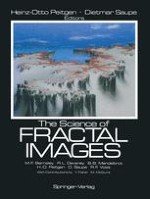1988 | OriginalPaper | Buchkapitel
Algorithms for random fractals
verfasst von : Dietmar Saupe
Erschienen in: The Science of Fractal Images
Verlag: Springer New York
Enthalten in: Professional Book Archive
Aktivieren Sie unsere intelligente Suche, um passende Fachinhalte oder Patente zu finden.
Wählen Sie Textabschnitte aus um mit Künstlicher Intelligenz passenden Patente zu finden. powered by
Markieren Sie Textabschnitte, um KI-gestützt weitere passende Inhalte zu finden. powered by
For about 200 years now mathematicians have developed the theory of smooth curves and surfaces in two, three or higher dimensions. These are curves and surfaces that globally may have a very complicated structure but in small neighborhoods they are just straight lines or planes. The discipline that deals with these objects is differential geometry. It is one of the most evolved and fascinating subjects in mathematics. On the other hand fractals feature just the opposite of smoothness. While the smooth objects do not yield any more detail on smaller scales a fractal possesses infinite detail at all scales no matter how small they are. The fascination that surrounds fractals has two roots: Fractals are very suitable to simulate many natural phenomena. Stunning pictures have already been produced, and it will not take very long until an uninitiated observer will no longer be able to tell whether a given scene is natural or just computer simulated. The other reason is that fractals are simple to generate on computers. In order to generate a fractal one does not have to be an expert of an involved theory such as calculus, which is necessary for differential geometry. More importantly, the complexity of a fractal, when measured in terms of the length of the shortest computer program that can generate it, is very small.
